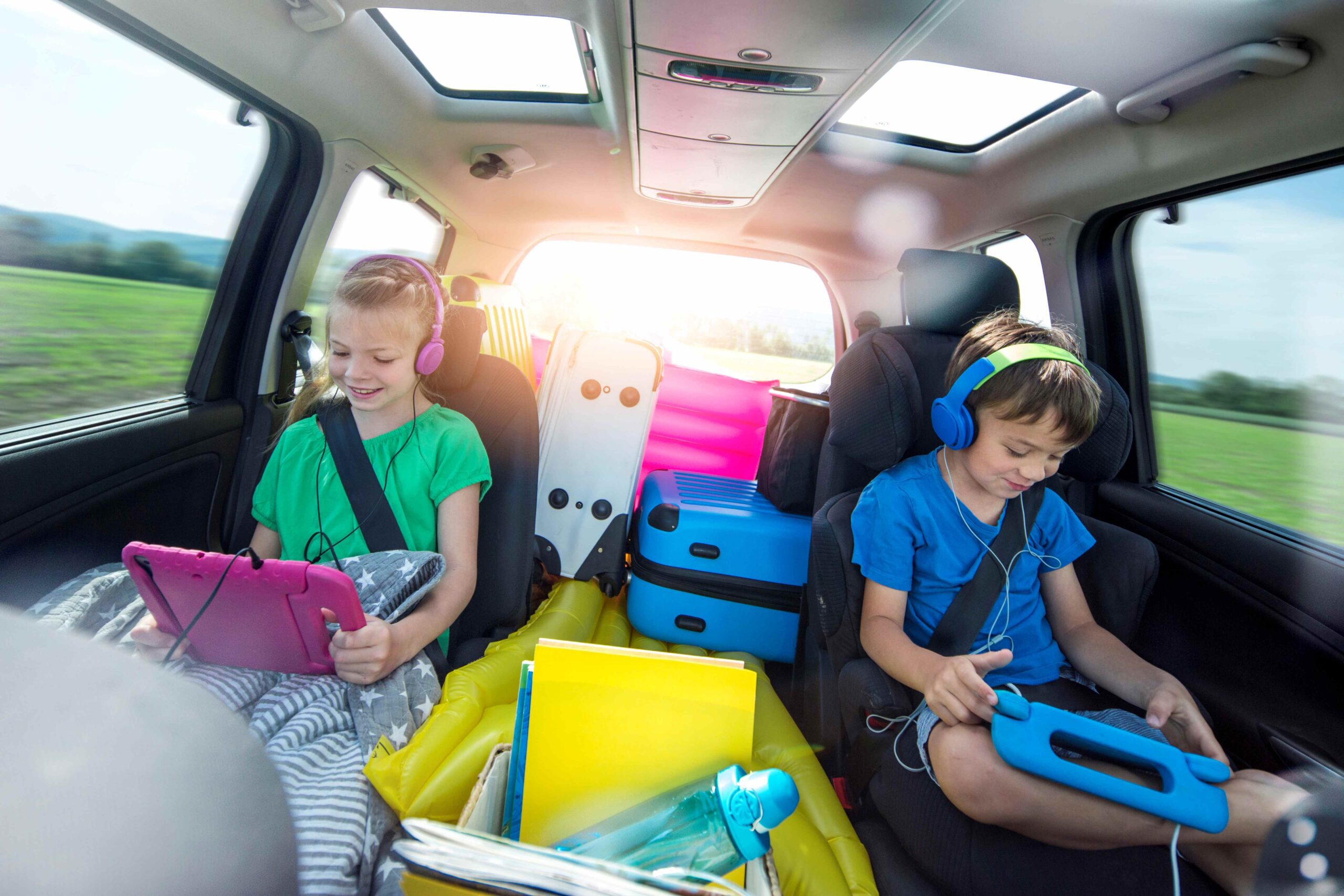The thought of a family vacation often conjures up images of fun, relaxation, and making lasting memories. But for parents of children with picky eating habits or sensory processing sensitivities, the reality of travel can sometimes feel more like a logistical challenge. Will there be anything my child will eat? How will they cope with the noise and crowds? Will we even make it through the car ride without a meltdown?
If these questions resonate with you, you’re definitely not alone. At Michigan Pediatric Therapy, we understand the unique considerations that come with traveling with children who have feeding or sensory differences. We believe that with thoughtful planning and proactive strategies, you can enjoy those much-needed getaways.
This blog is designed to be your go-to guide for preparing for various travel scenarios—from a simple picnic in the park to a full-fledged amusement park adventure—with your picky eater or sensory-sensitive child in mind. We’ll explore practical tips and tricks, drawing on our experience in pediatric occupational therapy, to help make your journeys smoother and more enjoyable for the whole family. Whether you’re searching for “travel tips for picky eaters,” “sensory friendly travel with kids,” or “pediatric OT for feeding issues,” you’ve come to the right place. Let’s turn those travel worries into confident plans!

Laying the Groundwork: Starting Small and Building Confidence
Before embarking on a big trip, it’s incredibly helpful to test the waters with smaller excursions. Think of it as building your child’s tolerance and your own confidence in managing potential challenges.
- The Nearby Picnic: Start with a short outing to a local park for a picnic. This allows you to control the food environment entirely. Pack familiar favorites and involve your child in the packing process if they’re willing. This helps them feel a sense of ownership and predictability. Observe how they handle eating in a new environment with different sights and sounds.
- A Short Car Ride Adventure: Take a drive to a nearby town or attraction that’s only an hour or two away. This helps your child get used to being in the car for a longer period. Bring along preferred snacks, drinks, and comfort items. Practice using any sensory tools you might plan to use on a longer trip, like headphones or a favorite blanket.
- Visiting a Less Crowded Public Space: Try a visit to a library during off-peak hours or a smaller local museum. This can help your child acclimate to being around other people in a controlled and less overwhelming setting. Observe their sensory responses and practice any calming techniques you use at home.
These smaller experiences provide valuable insights into your child’s triggers and coping mechanisms, allowing you to refine your strategies before a larger trip.

Hotel Havens: Creating a Comfortable Base
Hotels can present a range of sensory challenges and food uncertainties. Here’s how to prepare for a hotel stay:
- Research and Reach Out: Before booking, check the hotel’s website for information about amenities. Look for keywords like “quiet rooms,” “accessible features,” or even mentions of dietary accommodations. Don’t hesitate to call the hotel directly and speak to the concierge or guest services.
- Ask About Sensory Rooms (if applicable): While not all hotels have dedicated sensory rooms, it’s worth asking if they have any quiet spaces or if they can offer a room in a less busy area of the hotel. Some hotels are becoming increasingly aware of sensory needs.
- Room Preparation: Once you arrive, take some time to personalize the room to make it more comfortable for your child. Unpack familiar comfort items like their favorite blanket, pillow, or stuffed animal. Arrange the room in a way that feels predictable and safe.
- Food Logistics: If your child has significant dietary restrictions, consider bringing shelf-stable snacks and easy-to-prepare meals. A portable electric kettle or microwave (if allowed by the hotel) can be incredibly helpful. Research grocery stores or pharmacies near the hotel where you can purchase preferred foods.
- Visual Schedules: For children who benefit from predictability, create a simple visual schedule for the hotel stay, outlining the daily routines like waking up, getting ready, mealtimes, and planned activities.

Conquering the Car Ride: Comfort and Engagement
Long car rides can be particularly challenging for children with sensory sensitivities or those prone to boredom, which can exacerbate picky eating.
- Pack a Sensory Toolkit: Include items like noise-canceling headphones, sunglasses, a weighted lap pad, and fidget toys. These can help regulate sensory input and provide comfort.
- Entertainment is Key: Plan a variety of engaging activities. This could include audiobooks, favorite music, movies on a tablet, travel games, and interactive toys. Rotate activities to keep your child interested.
- Frequent Breaks: Plan for regular stops, even if they’re just short breaks to stretch, move around, and get some fresh air. This can help prevent sensory overload and restlessness.
- Food and Drink Strategy: Pack a cooler with a variety of preferred snacks and drinks. Having familiar options readily available can prevent meltdowns related to hunger or thirst. Consider packing small, frequent snacks rather than relying solely on meal stops.
- Visual Supports for Time: For children who struggle with the concept of time, use visual timers or a simple picture schedule to show the progress of the journey and when the next break is coming.

Navigating Large Crowds: Creating Safe Zones
Large crowds can be overwhelming for anyone, but especially for children with sensory sensitivities.
- Preparation and Social Stories: Before entering a crowded environment, talk to your child about what to expect. Social stories, which are simple narratives that describe a social situation, can be very helpful in preparing them.
- Designated Safe Person and Spot: Identify a “safe person” (usually a parent or caregiver) and a designated meeting spot in case you get separated. Ensure your child understands who this person is and where the meeting spot is.
- Sensory Breaks: Plan for regular breaks away from the crowds in quieter areas. This could be a less busy corner, a designated quiet zone (if available), or even stepping outside for a few minutes.
- Visual Cues for Overload: Teach your child a simple visual cue (like tapping their head) to indicate when they are feeling overwhelmed. This allows them to communicate their needs without having to use words if they are feeling anxious.
- Comfort Items On Hand: Bring along comfort items like a small, familiar toy or a soft blanket that can provide a sense of security in a crowded environment.

Soaring Through the Skies: Airplane Adventures
Air travel presents its own set of sensory and feeding challenges.
- Pre-Flight Preparation: Talk to your child about the airplane experience beforehand. Watch videos or read books about flying. Explain the different sounds and sensations they might encounter.
- Sensory Toolkit for the Flight: Pack noise-canceling headphones (essential!), sunglasses (for bright cabin lights), a favorite small toy or blanket, and perhaps a chewy fidget for take-off and landing to help with ear pressure.
- Food and Drink Provisions: Airlines often have limited and unpredictable food options. Pack a variety of your child’s preferred snacks and drinks in your carry-on. Consider shelf-stable meals if your child has significant dietary restrictions.
- Entertainment Galore: Load tablets with movies, games, and audiobooks. Pack small, quiet toys and activity books to keep them occupied.
- Movement Breaks (when possible): If it’s a long flight, try to take short walks in the aisle when the seatbelt sign is off (and it’s safe to do so). This can help with restlessness.
- Communication Cards: For children who have difficulty verbalizing their needs, consider creating simple communication cards with pictures for things like “I’m hungry,” “I’m thirsty,” “It’s too loud,” or “I need a break.”

Thrills Without Overwhelm: Amusement Park Strategies
Amusement parks can be a sensory overload with bright lights, loud noises, and long lines.
- Advance Research: Check the park’s website for information about sensory-friendly options, quiet zones, or accessibility information. Some parks offer sensory guides or designated quiet areas.
- Strategic Timing: If possible, visit the park during off-peak hours or weekdays when crowds are likely to be smaller.
- Visual Schedules and Maps: Before your visit, review a map of the park with your child and create a visual schedule of the rides or attractions you plan to visit. This provides predictability.
- Noise Reduction: Bring high-quality noise-reducing headphones or earplugs.
- Sunglasses and Hats: Protect sensitive eyes from bright sunlight.
- Sensory Breaks are Non-Negotiable: Plan for regular breaks in quieter areas away from the main crowds and noise. This could be a less busy seating area, a shaded spot, or even a brief exit from the park.
- Preferred Snacks and Drinks: If allowed by the park, pack a supply of your child’s preferred snacks and drinks to have on hand, especially if you anticipate limited suitable food options within the park. If food must be purchased within the park, check their website or call ahead of time to locate which food stands will provide the best options for your child.
- “Escape Plan”: Identify a clear “escape plan”—a designated quiet area or a way to leave the park quickly if your child becomes overwhelmed.

We're Here to Support Your Family's Adventures
At Michigan Pediatric Therapy, our occupational therapists understand the intricate relationship between sensory processing, feeding challenges, and participation in daily life—including travel and leisure. We work with families throughout Metro Detroit to develop individualized strategies and coping mechanisms that can make outings and vacations more enjoyable for everyone.
If you’re looking for support in navigating these challenges, our pediatric occupational therapy services can provide valuable tools and techniques. We can help your child develop greater tolerance for new environments, expand their food repertoire, and learn self-regulation strategies to manage sensory input.
Don’t let picky eating or sensory sensitivities hold your family back from creating wonderful travel memories. With thoughtful preparation and the right support, smooth travels and happy kids are within reach. Contact Michigan Pediatric Therapy today to learn how our occupational therapy services can empower your family’s adventures. We’re here to help you navigate those journeys with confidence and joy. Bottom line: take the trip!
Michigan Pediatric Therapy
📍 27655 Middlebelt Rd., Suite 130, Farmington Hills, MI 48334
📞 (248) 939-4030
🌐 mipediatrictherapy.com



